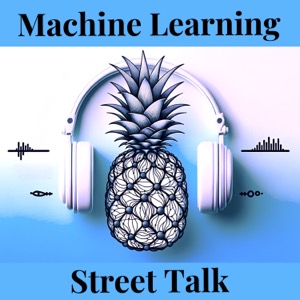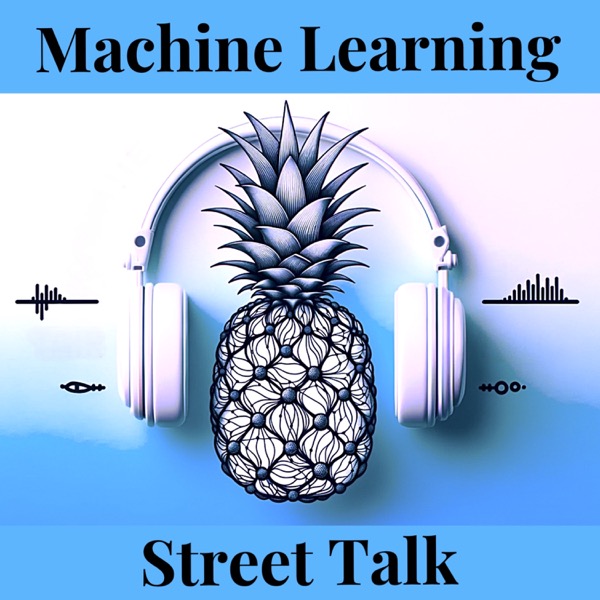Clement Bonnet - Can Latent Program Networks Solve Abstract Reasoning?
Machine Learning Street Talk (MLST) - En podcast av Machine Learning Street Talk (MLST)

Kategorier:
Clement Bonnet discusses his novel approach to the ARC (Abstraction and Reasoning Corpus) challenge. Unlike approaches that rely on fine-tuning LLMs or generating samples at inference time, Clement's method encodes input-output pairs into a latent space, optimizes this representation with a search algorithm, and decodes outputs for new inputs. This end-to-end architecture uses a VAE loss, including reconstruction and prior losses. SPONSOR MESSAGES:***CentML offers competitive pricing for GenAI model deployment, with flexible options to suit a wide range of models, from small to large-scale deployments. Check out their super fast DeepSeek R1 hosting!https://centml.ai/pricing/Tufa AI Labs is a brand new research lab in Zurich started by Benjamin Crouzier focussed on o-series style reasoning and AGI. They are hiring a Chief Engineer and ML engineers. Events in Zurich. Goto https://tufalabs.ai/***TRANSCRIPT + RESEARCH OVERVIEW:https://www.dropbox.com/scl/fi/j7m0gaz1126y594gswtma/CLEMMLST.pdf?rlkey=y5qvwq2er5nchbcibm07rcfpq&dl=0Clem and Matthew-https://www.linkedin.com/in/clement-bonnet16/https://github.com/clement-bonnethttps://mvmacfarlane.github.io/TOC1. LPN Fundamentals [00:00:00] 1.1 Introduction to ARC Benchmark and LPN Overview [00:05:05] 1.2 Neural Networks' Challenges with ARC and Program Synthesis [00:06:55] 1.3 Induction vs Transduction in Machine Learning2. LPN Architecture and Latent Space [00:11:50] 2.1 LPN Architecture and Latent Space Implementation [00:16:25] 2.2 LPN Latent Space Encoding and VAE Architecture [00:20:25] 2.3 Gradient-Based Search Training Strategy [00:23:39] 2.4 LPN Model Architecture and Implementation Details3. Implementation and Scaling [00:27:34] 3.1 Training Data Generation and re-ARC Framework [00:31:28] 3.2 Limitations of Latent Space and Multi-Thread Search [00:34:43] 3.3 Program Composition and Computational Graph Architecture4. Advanced Concepts and Future Directions [00:45:09] 4.1 AI Creativity and Program Synthesis Approaches [00:49:47] 4.2 Scaling and Interpretability in Latent Space ModelsREFS[00:00:05] ARC benchmark, Chollethttps://arxiv.org/abs/2412.04604[00:02:10] Latent Program Spaces, Bonnet, Macfarlanehttps://arxiv.org/abs/2411.08706[00:07:45] Kevin Ellis work on program generationhttps://www.cs.cornell.edu/~ellisk/[00:08:45] Induction vs transduction in abstract reasoning, Li et al.https://arxiv.org/abs/2411.02272[00:17:40] VAEs, Kingma, Wellinghttps://arxiv.org/abs/1312.6114[00:27:50] re-ARC, Hodelhttps://github.com/michaelhodel/re-arc[00:29:40] Grid size in ARC tasks, Chollethttps://github.com/fchollet/ARC-AGI[00:33:00] Critique of deep learning, Marcushttps://arxiv.org/vc/arxiv/papers/2002/2002.06177v1.pdf

